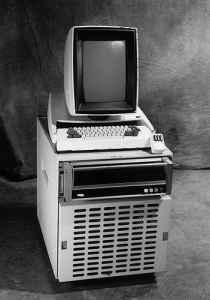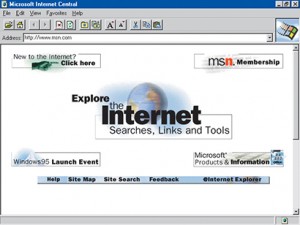 At Daylife we have a love/hate relationship with web content management systems. For years we’ve watched publishers and marketers struggle with sub-par options, including difficult-to-manage, home-grown legacy solutions; open source applications that are often obtuse and sorely lacking in features, flexibility, and basic documentation; and enterprise offerings that do some things very well and others poorly or not at all.
At Daylife we have a love/hate relationship with web content management systems. For years we’ve watched publishers and marketers struggle with sub-par options, including difficult-to-manage, home-grown legacy solutions; open source applications that are often obtuse and sorely lacking in features, flexibility, and basic documentation; and enterprise offerings that do some things very well and others poorly or not at all.
Now the field is changing. The “PubOS” is emerging as a set of best practices and tools for the cloud-based technology/media stack. More and more firms are moving towards customized systems based on the precepts of the PubOS. Many of these are targeted, additive layers of useful functionality and UI on top of a legacy CMS, saving the trouble of scrapping everything and starting at zero; others are rebuilt from scratch. But rather than being loaded with gratuitous functionality meant to (weakly) address any potential use case, they’re instead being designed for very specific needs, like that of a newsroom for deployment agility or that of a marketer for powerful multimedia curation.
But as we move forward it’s worth a quick look back at how the CMS evolved. Knowing its heritage will be useful as we develop a new breed of CMS that’s more dynamic, malleable, and better attuned to the ways we communicate with and engage audiences today.
The Earliest Forms of Content Management
Most histories of the CMS begin with the dawn of the World Wide Web, but a complete history goes something like: stone walls > clay tablets > papyrus scrolls > bound paper > town crier sandwich boards > card catalogs > enterprise document management. Let’s pick up on that last one.
WordPress v.000000001The first content management systems we’d recognize as such were mainframe-based document repositories, devised by IBM and its ilk and used almost exclusively by highly trained specialists.
These systems were first developed in the 70s and were used for storing and recalling text documents. Because of their complexity, cost, and limited use cases (they were useful mainly for conglomerate-scale organizations with oceans of documents in triplicate to create and track), most of these systems resided deep within large firms. The earliest stabs at electronic publishing were also developed during this decade, and bit by bit (no pun) the process was becoming mechanized.
The 70s: Graphical Interfaces, Paperless Publishing, Inexplicably Wide Lapels
The Xerox Alto, produced in 1973, introduced a few firsts that would move computing in a dramatically more publisher-friendly direction. It featured the first mouse-driven desktop metaphor, as well as the earliest graphical user interface (GUI). These innovations made PCs vastly more usable by non-experts and pushed the boundaries of electronic content (very slightly) beyond text.
By the late 70s, modern CMS-like traits emerge. A key development of this era was backend separation of content from the presentation layer, enabling separate editing and control of each. This allowed formatting changes at the template level while leaving the content itself unaffected, and vice versa.
One of the first companies to specialize in proto-CMS solutions was Atex, founded in 1973 by some MIT grads with a vision of a simpler, more flexible means of electronic composition. By 1977, Atex had produced a terminal/server system that put reporters and editors in direct contact via keyboard-enabled screens. It had an asynchronous messaging system that functioned like primitive email, and the system could connect widely distributed teams that could then share the platform effectively. This was the first truly electronic, paper-free system for sharing, managing, and collaborating on news stories.
The news publishing marketplace was desperate for better means of production, and Atex’s early version of a CMS-enhanced workflow took off. By 1979 it was in use by the early-adoptin’ likes of US News and World Report, Newsday, and the Minneapolis Star and Tribune.
Other major advancements in this era included the first widely-available personal computers with text interfaces. These pricey early PCs were bought in large numbers by deep-pocketed firms, which set the stage for mass enterprise adoption of CMS capabilities.
Also: those lapels were much, much too wide for your head. The tie was, too. Why’d you have to wearTHAT on picture day?
The 80s: Totally Tubular Desktop Publishing and Content Creation
By 1982, new machinery was coming to market that both created need for and enabled new forms of content creation and management.

I had this poster in '86, but it was offset by a very macho selection from the Iron Maiden "Eddie" line.
The Xerox Star and Apple’s Lisa offered some of the first consumer-ready GUIs, training early adopters to expect a somewhat broader range of content. WYSIWYG interfaces – another innovation of the Xerox Alto, specifically its “Bravo” document preparation app – were becoming more and more intuitive and powerful.
Of course, these tools were very raw and primitive by current standards. Back then scrolling a document was perhaps the biggest challenge a user could pose against a computer’s processor. Joomla! was still some distance away.
1984 saw the introduction of the Apple Macintosh, which would eventually become associated with*desktop publishing and graphic design. In fact, 1984 saw an explosion of content creation tools: Apple launched MacWrite and MacPublisher that year, and Manhattan Graphics released Ready, Set, Go! for the Mac platform. Adobe Pagemaker was next, and Interleaf launched the first commercial document processor, another WYSIWYG innovation. 1985? FileNet’s WorkFlo, one of the first comprehensive process (and content) management platforms. 1986? Quark Express. The content ecosystem was taking shape, driven by advances in creation and management tools.
The 90s: The Cambrian Explosion of content management systems
With the dawn and rapid spread of the World Wide Web came an amazing profusion of systems to create and manage content.
One of the first major products of this new wave was the venerable Lotus Notes. It was a broad suite that included email, document creation and processing, calendaring, and other productivity tools, but most notably it featured an early version of a blogging tool. Notes was also a true platform that spawned a vast array of apps and plugins, presaging the future of endlessly extensible content platforms.
As the promise and potential of the web grabbed the public’s imagination, the pace of both innovation and major new product shipments began to accelerate. 1993 brought the first graphical browser, Mosaic, bringing the Web to the general public. In 1994, SoftQuad** released HoTMetaL, an early HTML editor of the type web professionals still use.
In the mid-90s, key content technologies arrived one after another, many focused on ease of use by non-techies. It was suddenly possible for someone with virtually no programming skill to create, edit, track, and manage a wide variety of content types.
Vermeer Technologies’ Frontpage landed in 1995, allowing huge numbers of non-programmers to build web presences and further developing the WYSIWYG model so crucial to current content management systems. Another innovative WYSIWYG tool, Macromedia’s Dreamweaver, came soon after. Vignette Corporation – a crucial player in the development of contemporary CMS – partnered with CNET and acquired their PRISM content management technology, which they built into their StoryServer product (which also incorporated their StoryBuilder technology). HoTMetaL released an intranet product, one of the first modern publishing tools that was for internal use only.
RightSite, FutureTense, Dynabase, Adobe GoLive, TeamSite, open source options like TYPO3… they came at a good clip, with each new offering giving users a mixture of experimentation with content creation and control plus consolidation of best practices and features. It was a heady – and just a bit scary – time to be a publisher.
The field accommodated players large and small. Giants like Microsoft (Active Server Pages/ASP), Oracle (databases of every stripe), and Allaire (ColdFusion) sprang up alongside the CMS creations of amateurs and hackers, who brought us PHP-based content systems like PhpNuke and PostNuke. (PHP originally stood for “Personal Home Page” which, along with NSFW chat rooms, cat pics, and hentai, pretty well sums up the content management needs for non-corporate users in the mid-90s).
Wiki technology took off as well, with hundreds of Perl-based sites popping up all over the web. And crucial content infrastructure matured in this era as well – Apache servers, MySQL, Linux, and other technologies became woven into the fabric of the web.
The news industry’s 21st-century misfortunes have gave rise to the meme that newsrooms were fatally slow to pick up on all this new media technology, and some notable holdouts, skeptics, and resisters gave credence to that image. But many big publishers were among the earliest adopters. The ability to control content up to the moment of and even after publication drove innovation in the industry at a time when consumers and corporate users were running to catch up. And today major publishers lead the hunt for ever-better and more immediate control over content, whatever stage of production it’s in.
The 2000s and beyond
Content management systems have become at once enormously sophisticated and ever simpler to use, allowing users of any skill level to create and manage text, images, documents, audio, video, social streams, and animation. The rise of blogging and social media platforms remade desktop publishing and content management into something a (not even especially) bright 8-year-old can handle gracefully. Easy content management made it the decade of the pajama-clad media disruptor.
Newer developments have brought CMS technology (especially the enabling of non-technical and design staff to manage high-volume websites) into the marketing mix. Some systems have started to work offline documents and communications into the CMS platform, so print materials, PDFs and, other offline content can now be managed via CMS just as easily as websites.
In the next installment, we’ll look at some of the lessons – bitter and sweet – learned through 40+ years of CMS development, and how they’ve shaped our current content management landscape.



